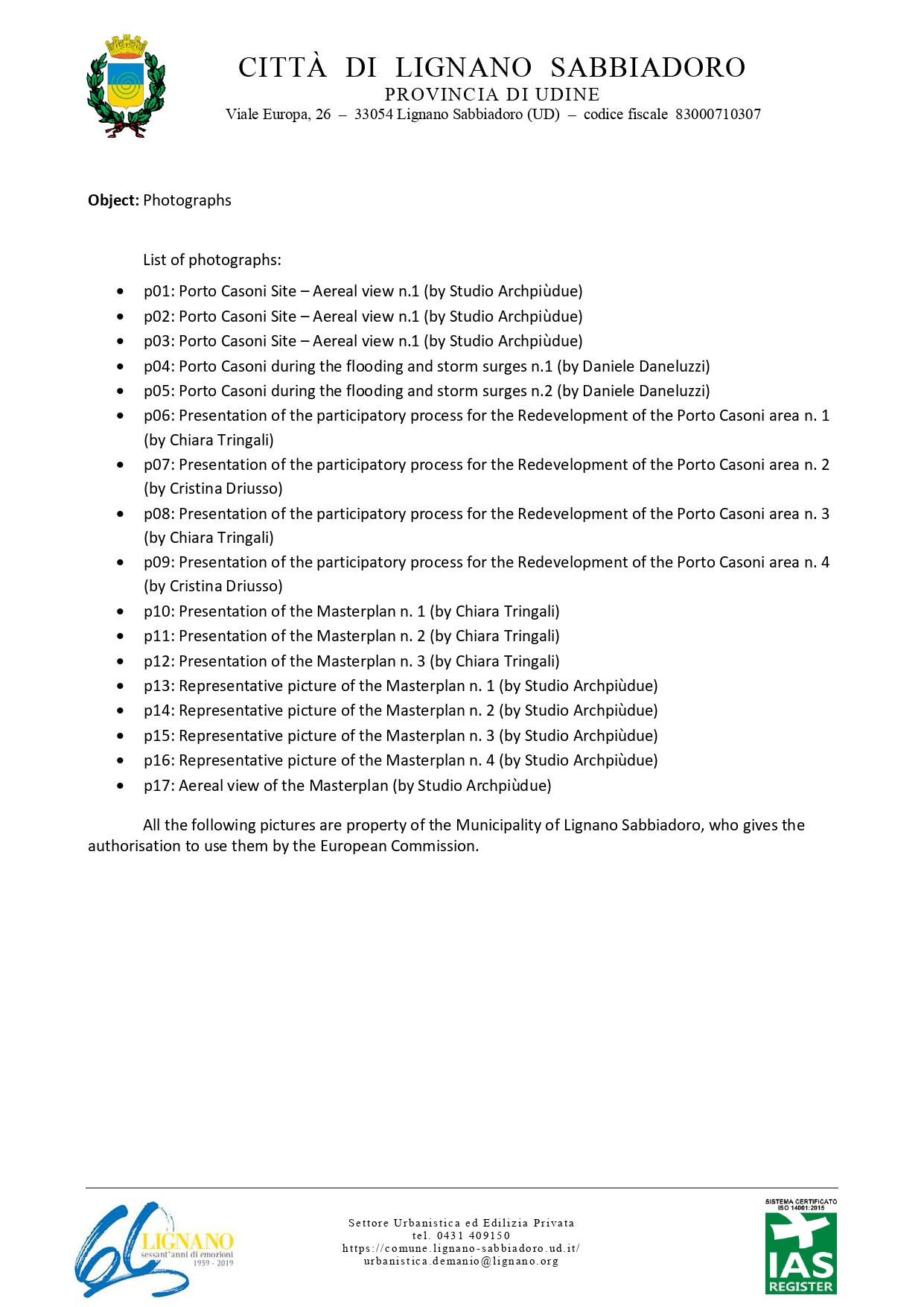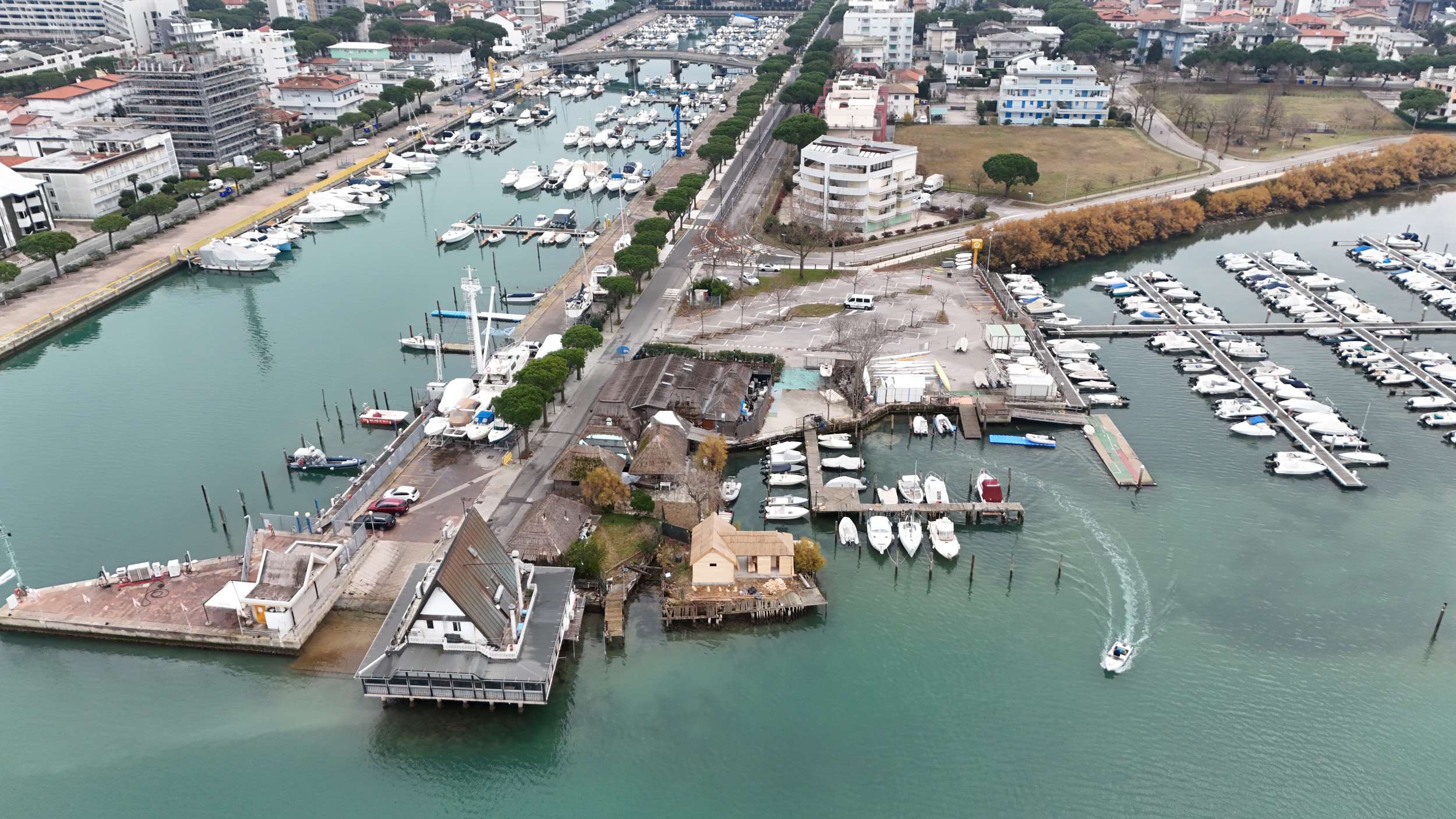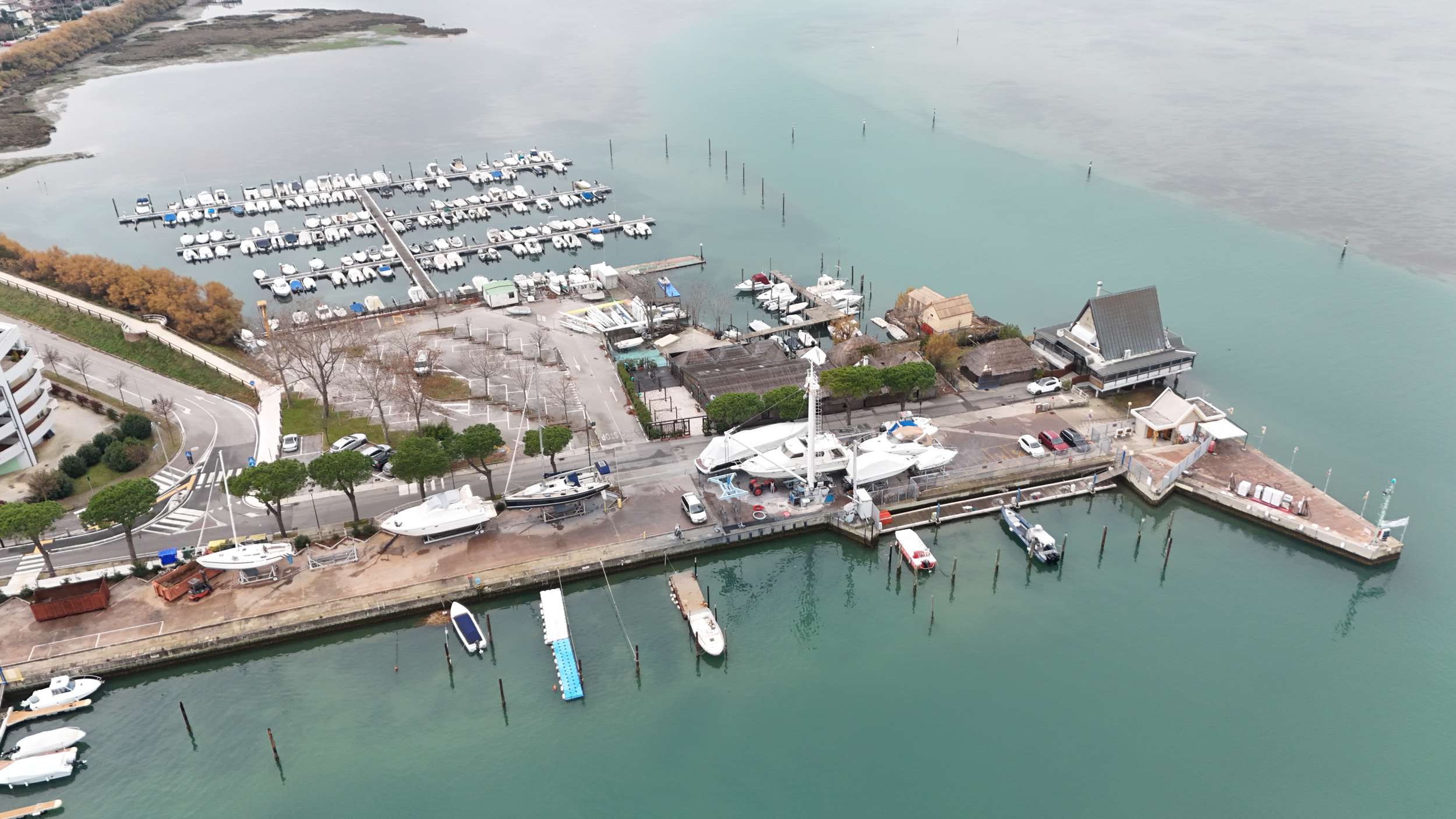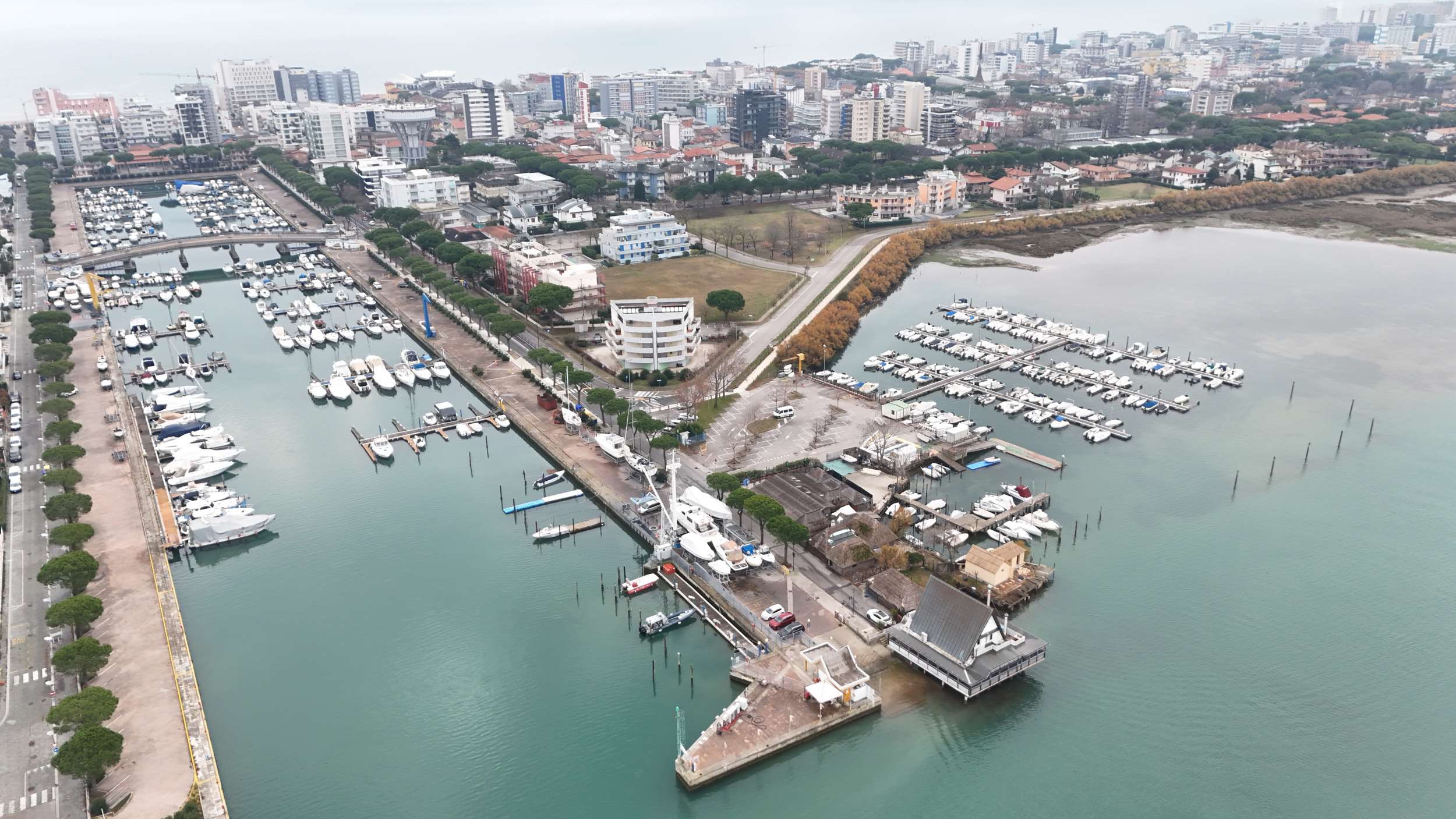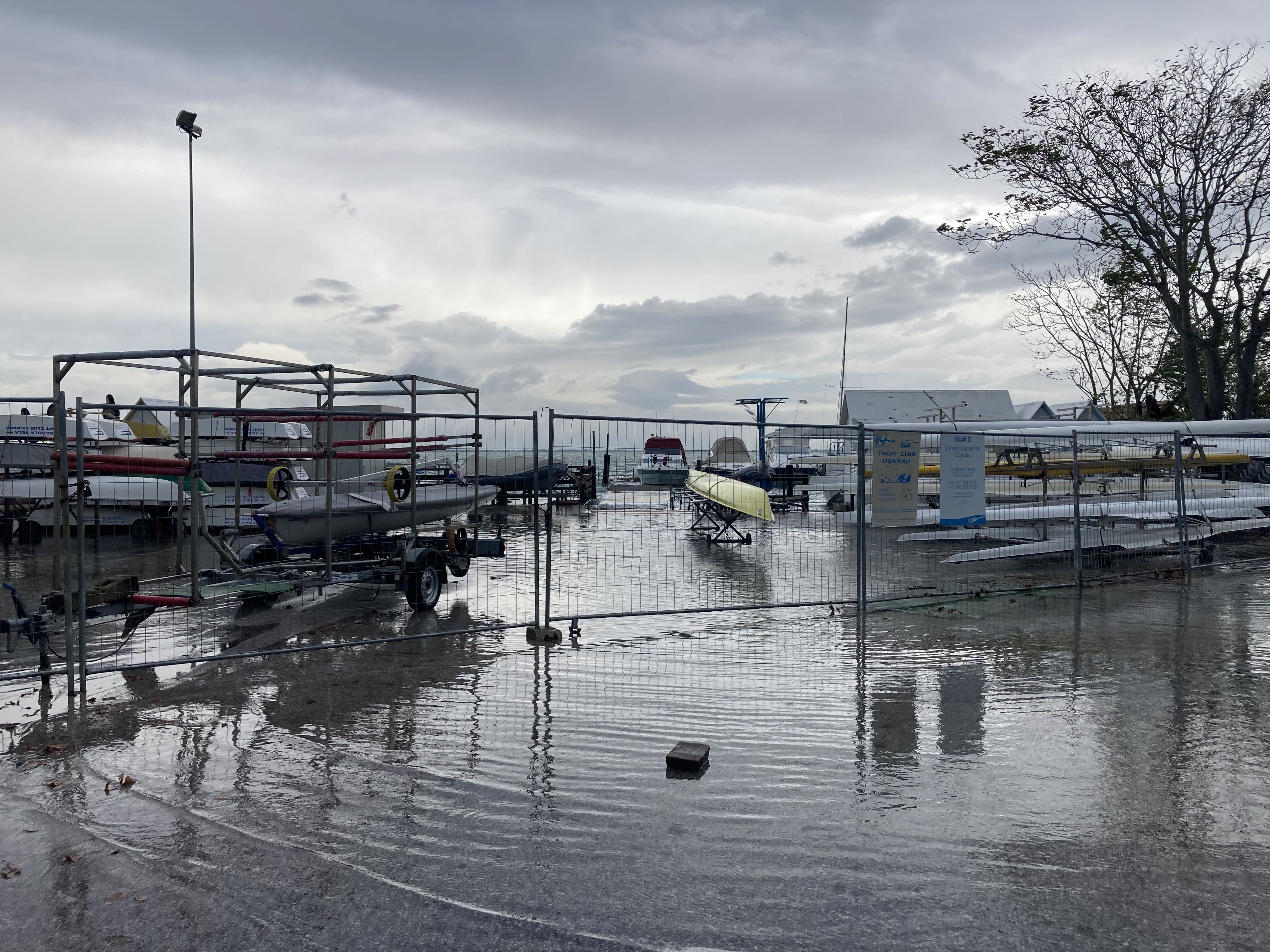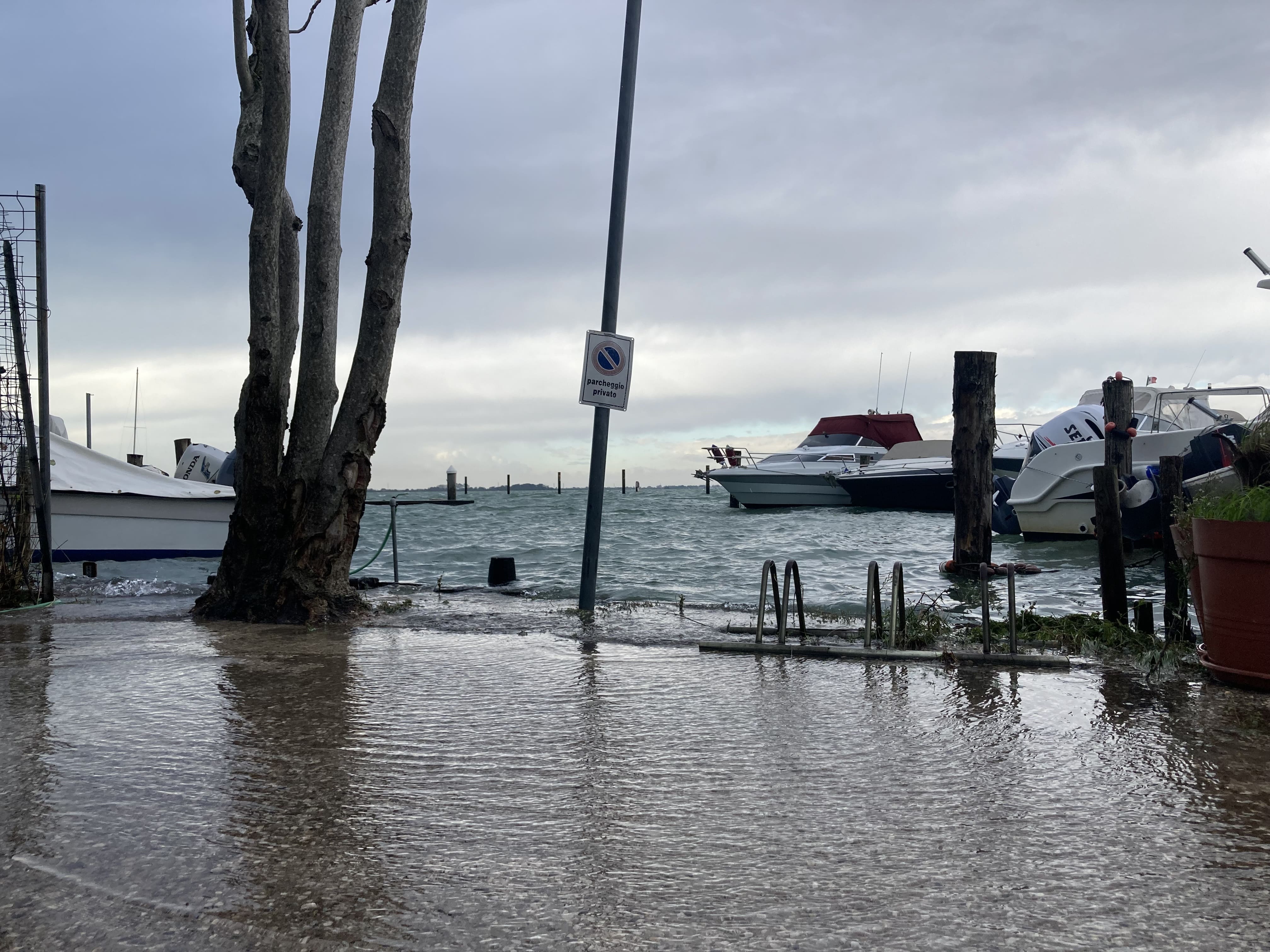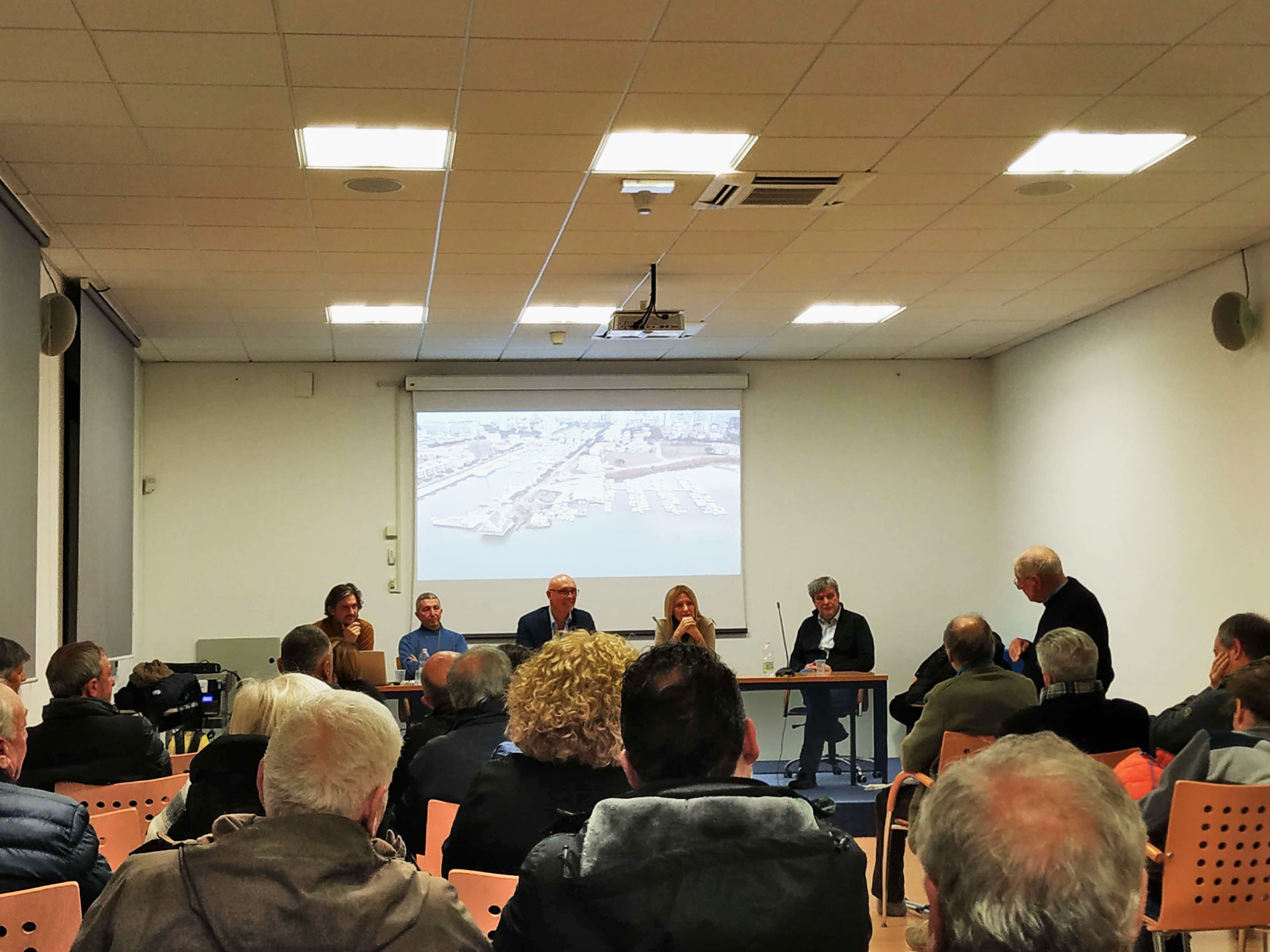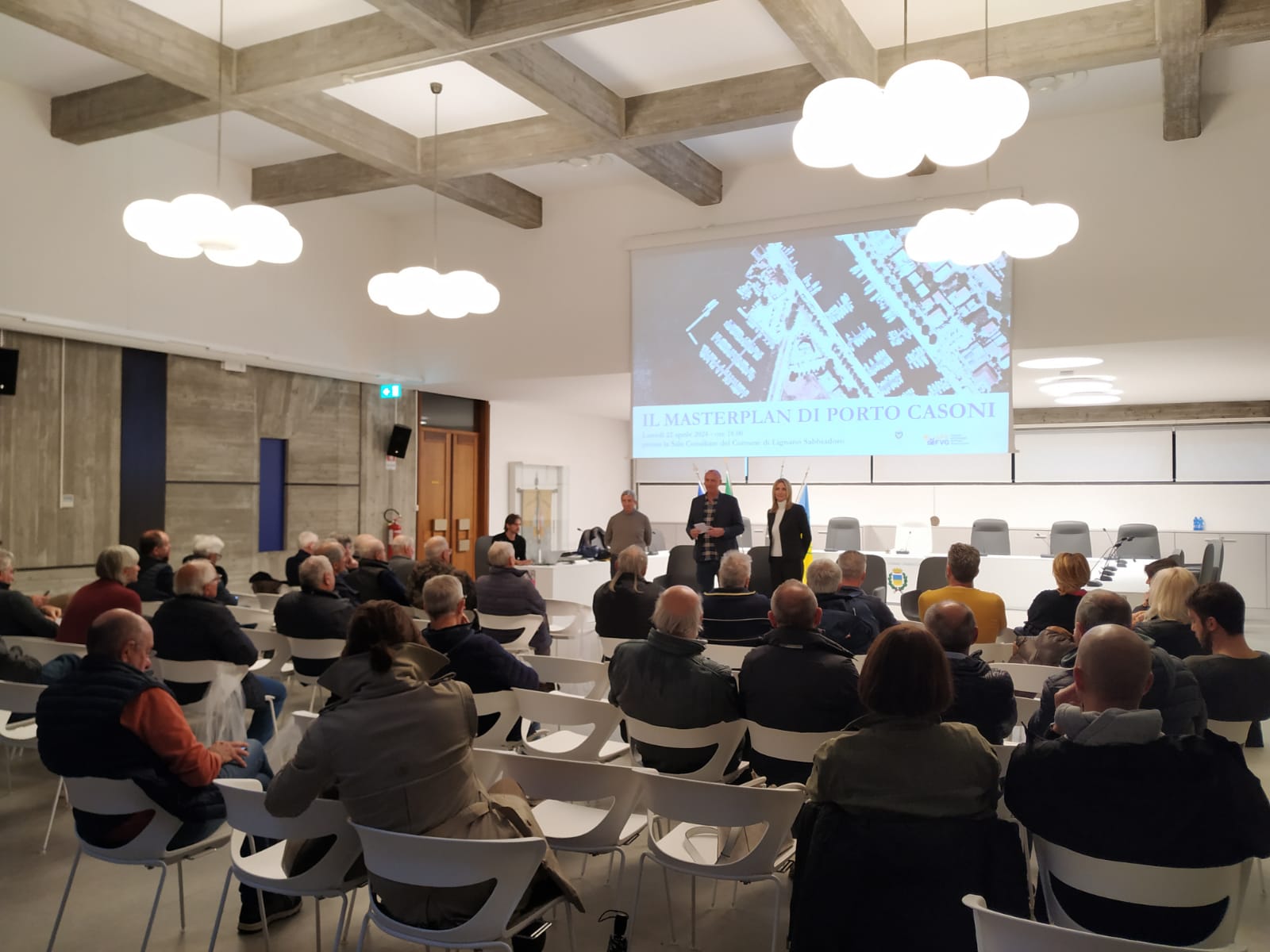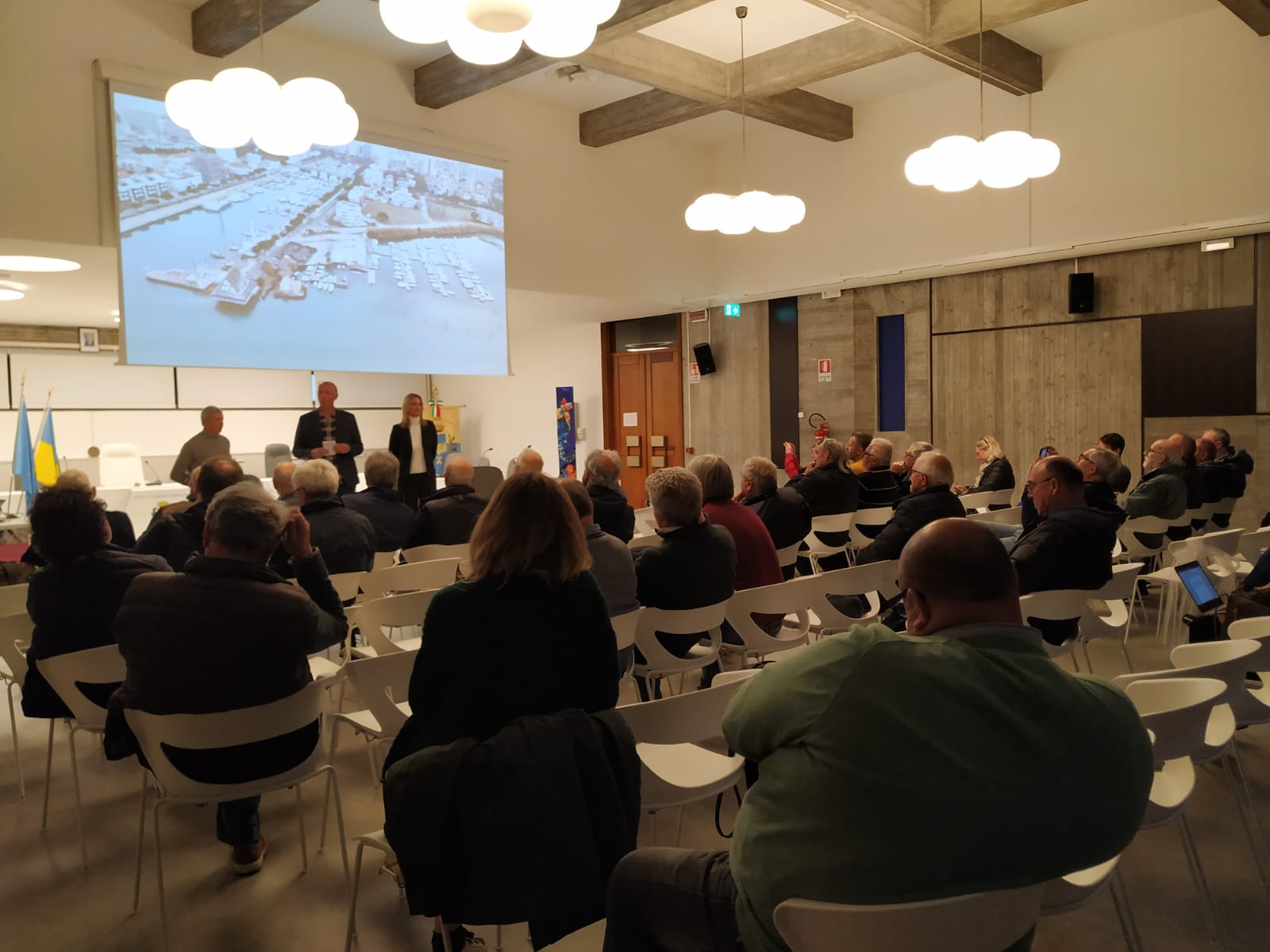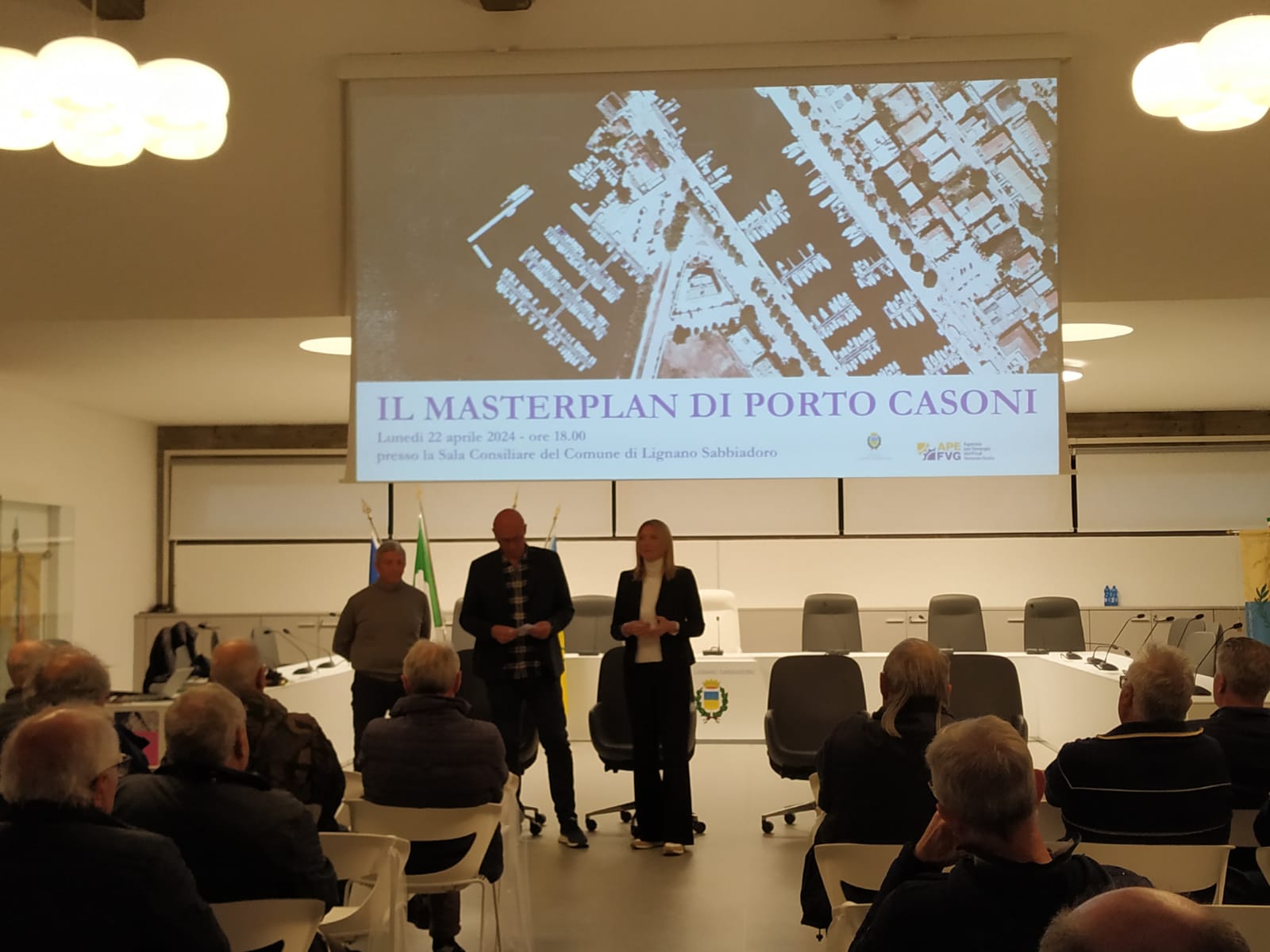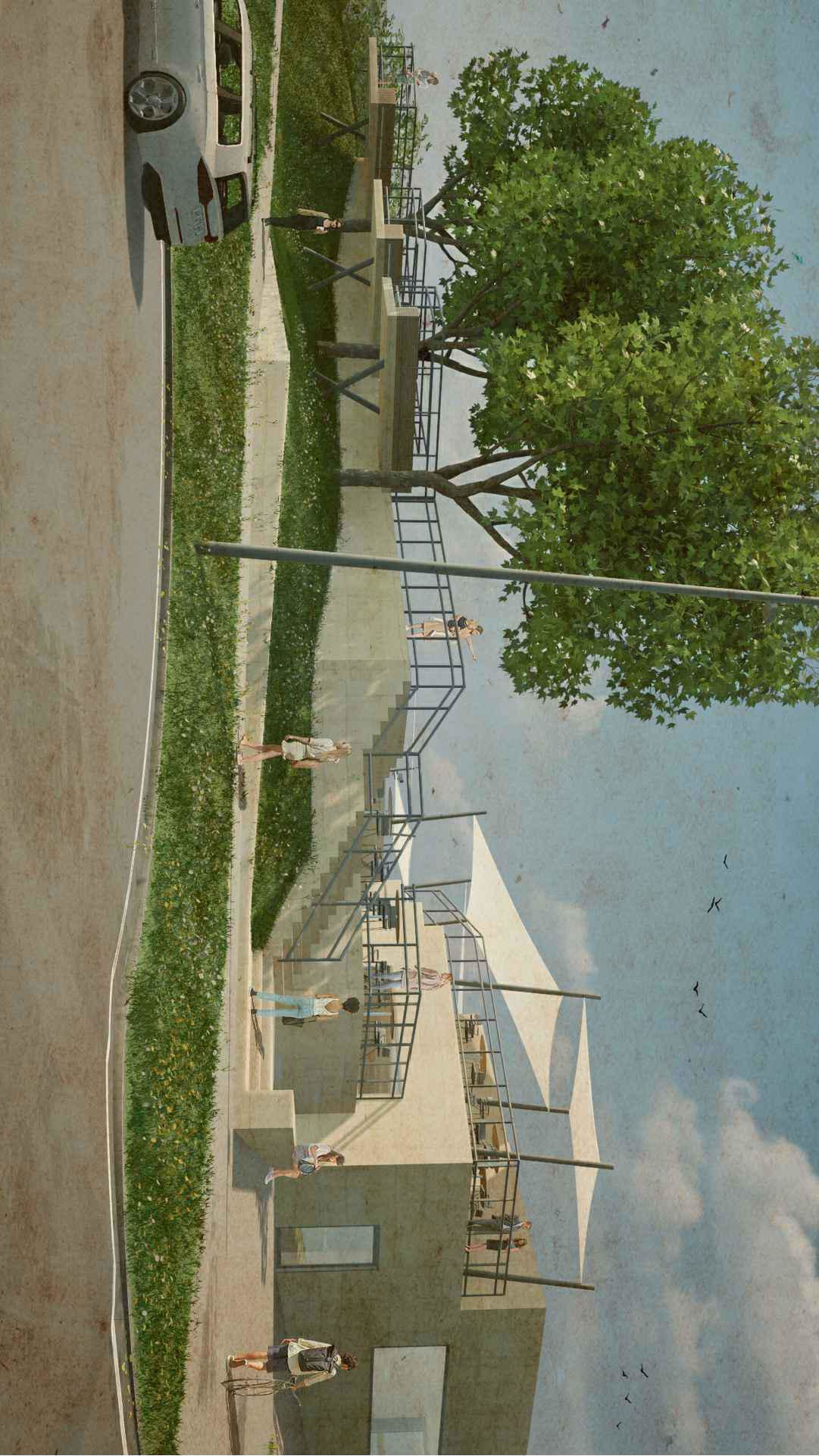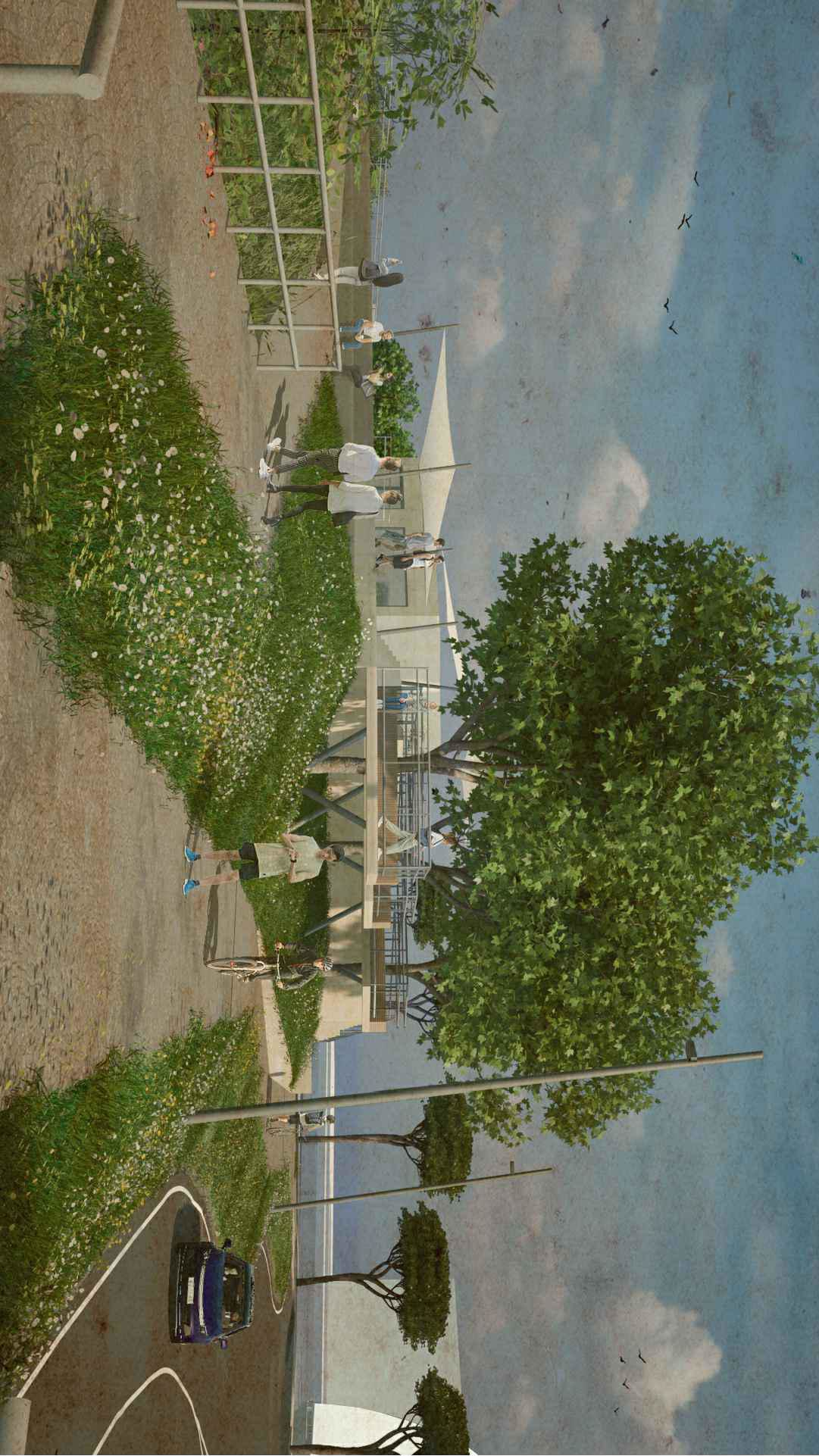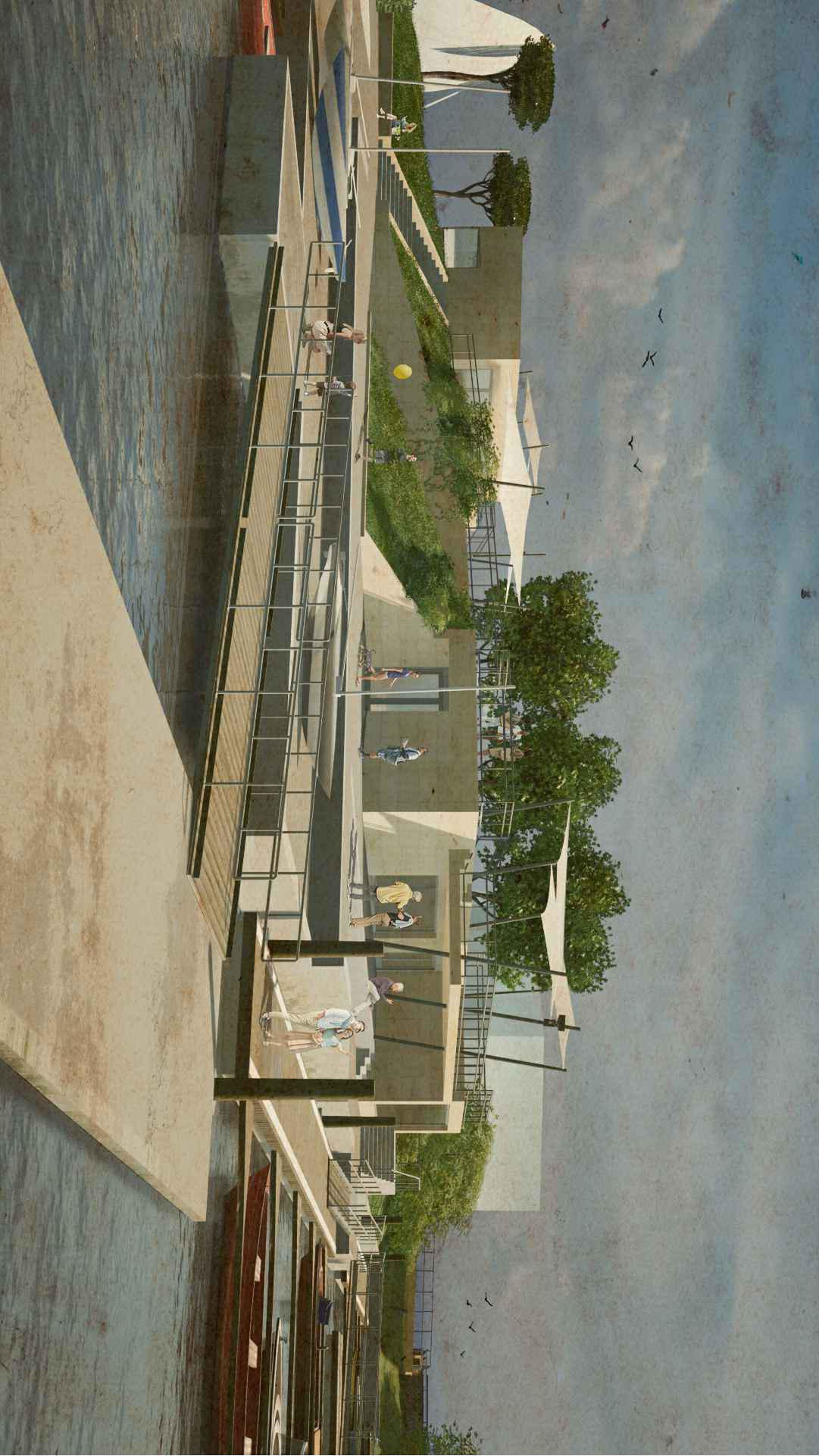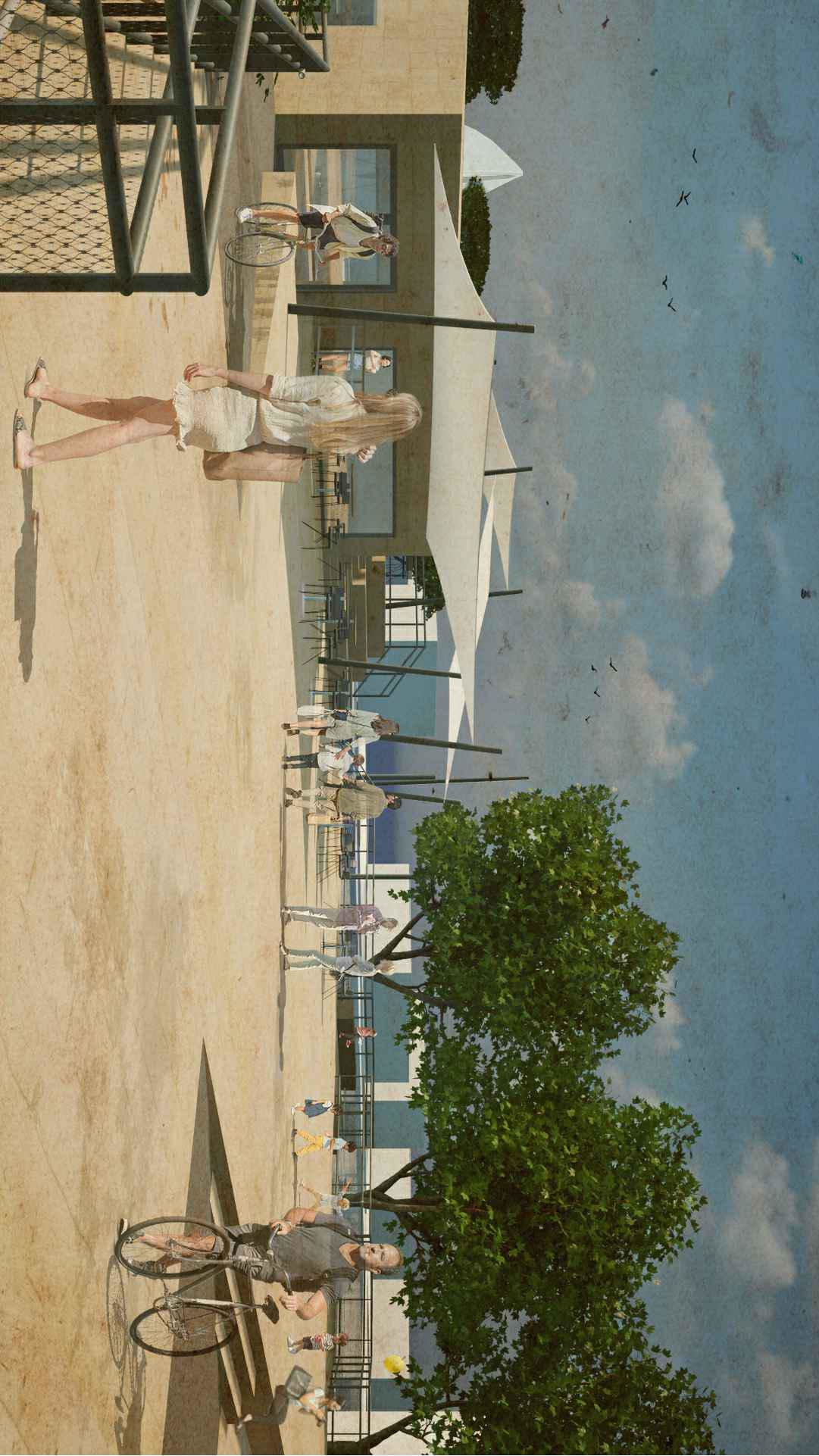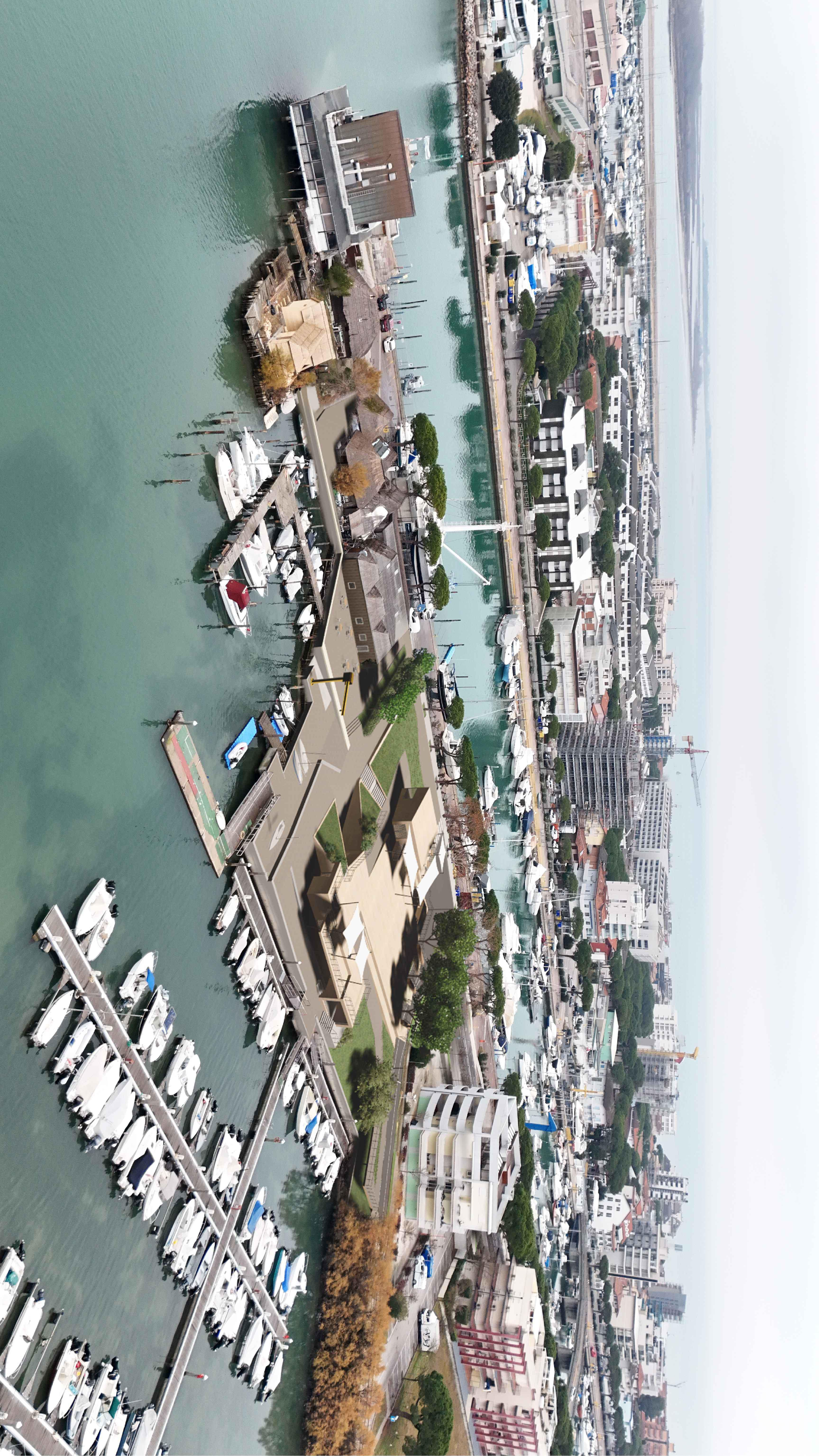Redevelopment of the Porto Casoni area
Safety measures and redevelopment of the Porto Casoni area to facilitate water sports activities
The project of the Porto Casoni area is a strategic initiative aimed at the redevelopment and enhancement of the site, with the long-term objective of safeguarding Porto Casoni through the creation of an integrated and safe center for water sports and tourism, serving as a place for social inclusion and promoting sports participation. It started from the involvement of local people that live everyday the area in order to identify ad best as possible the needs and wishes of the stakeholder.
Italy
{Empty}
Prototype level
Yes
Yes
Yes
Yes
ERDF : European Regional Development Fund
The participatory process has been financed with the Interreg Central Europe project CE0100019 MISSION CE CLIMATE
No
030049: Lignano Sabbiadoro (IT)
Lignano Sabbiadoro, a coastal town in Friuli Venezia Giulia region of North East Italy, is uniquely nestled between the Tagliamento River, the Marano Lagoon, and the Adriatic Sea. This location makes it particularly vulnerable to climate change impacts such as rising sea level and coastal erosion. As part of the EU co-funded MISSION CE CLIMATE project (Interreg Central Europe), aimed at enhancing local climate resilience, the Municipality of Lignano Sabbiadoro initiated a participatory process to reimagine and regenerate Porto Casoni area, a small harbour overlooking the lagoon that is frequently affected by flooding and requires significant spatial reorganization and renewal. In this town of fewer than 7000 residents, over 70 individuals, including representatives from 16 associations and private companies, actively participated in the consultation process. This collaboration allowed local stakeholders to share their needs and ideas, ensuring that the redesign would enhance safety and usability while reflecting the community's voice. The process fostered dialogue, inclusivity, and co-creation, strengthening trust and communication between the local authority and the community. The climax was reached when the Municipal Council's approved the Porto Casoni Masterplan. This ambitious project aims to address climate adaptation needs, enhance the quality of life for residents, and preserve the cultural, aesthetic, and recreational value of the area, ensuring a sustainable and resilient future for Lignano Sabbiadoro.
Climate resilience
Participatory process
Urban space regeneration
Community engagement
Coastal adaptation
Like most coastal cities around the world, Lignano Sabbiadoro is experiencing growing challenges linked to climate change: the city is ever more frequently facing floods (due to sea level rise and extreme precipitation events) as well as coastal erosion. Direct consequences of rising maximum temperatures, such as increased duration of heat waves and tropical nights, are also evident.
In particular, a public space called Porto Casoni, a little harbour overlooking the lagoon, is at risk of flooding due to sea-level rise and coastal erosion and adaptation is necessary: this is the main goal of the initiative in terms of climate sustainability. Consequently, the first objective of the released Masterplan, was to ensure safety and usability of the city area.
In Lignano, the urge for action is shared by both the local administration and the stakeholders because extreme events are more frequent, more widespread and more intense and they have significant impacts. Climate change effects challenge all the communities and push them to find solutions to increasing environmental, safety and economic concerns: Porto Casoni Masterplan can be a good example to follow.
In particular, a public space called Porto Casoni, a little harbour overlooking the lagoon, is at risk of flooding due to sea-level rise and coastal erosion and adaptation is necessary: this is the main goal of the initiative in terms of climate sustainability. Consequently, the first objective of the released Masterplan, was to ensure safety and usability of the city area.
In Lignano, the urge for action is shared by both the local administration and the stakeholders because extreme events are more frequent, more widespread and more intense and they have significant impacts. Climate change effects challenge all the communities and push them to find solutions to increasing environmental, safety and economic concerns: Porto Casoni Masterplan can be a good example to follow.
Like most coastal cities around the world, Lignano Sabbiadoro is experiencing growing challenges linked to climate change: the city is ever more frequently facing floods (due to sea level rise and extreme precipitation events) as well as coastal erosion. Direct consequences of rising maximum temperatures, such as increased duration of heat waves and tropical nights, are also evident.
In particular, a public space called Porto Casoni, a little harbour overlooking the lagoon, is at risk of flooding due to sea-level rise and coastal erosion and adaptation is necessary: this is the main goal of the initiative in terms of climate sustainability. Consequently, the first objective of the released Masterplan, was to ensure safety and usability of the city area.
In Lignano, the urge for action is shared by both the local administration and the stakeholders because extreme events are more frequent, more widespread and more intense and they have significant impacts. Climate change effects challenge all the communities and push them to find solutions to increasing environmental, safety and economic concerns: Porto Casoni Masterplan can be a good example to follow.
In particular, a public space called Porto Casoni, a little harbour overlooking the lagoon, is at risk of flooding due to sea-level rise and coastal erosion and adaptation is necessary: this is the main goal of the initiative in terms of climate sustainability. Consequently, the first objective of the released Masterplan, was to ensure safety and usability of the city area.
In Lignano, the urge for action is shared by both the local administration and the stakeholders because extreme events are more frequent, more widespread and more intense and they have significant impacts. Climate change effects challenge all the communities and push them to find solutions to increasing environmental, safety and economic concerns: Porto Casoni Masterplan can be a good example to follow.
Today Porto Casoni is not much more than a parking lot with docks, but it lies on the beautiful Marano Lagoon, at the end of a long bike path. One of the objectives of the initiative was to enhance and value the natural features to improve the experience of people aesthetically and qualitatively both for those who actively use this area and even for those who only pass there by chance. It is worth noting that Lignano is also a well-renowned tourist attraction site, reaching nearly 200.000 in population over summer.
Indeed, the Masterplan redesigned this public space with a project well integrated in the landscape, with organic shapes and natural building materials.
Moreover, the view on the lagoon will be enhanced thanks to the creation of a shaded outdoor space and a walking path around the “casoni” (old fishermen’s houses). Other solutions will be provided to reduce traffic and safety issues.
Design with nature is exemplary and can be replicated everywhere.
Indeed, the Masterplan redesigned this public space with a project well integrated in the landscape, with organic shapes and natural building materials.
Moreover, the view on the lagoon will be enhanced thanks to the creation of a shaded outdoor space and a walking path around the “casoni” (old fishermen’s houses). Other solutions will be provided to reduce traffic and safety issues.
Design with nature is exemplary and can be replicated everywhere.
In Lignano, the key objective is to set up an inclusive governance system focused on climate change resilience.
The local administration decided to start from the renovation of a public space that is shared by many people and local associations to enable the maximum level of engagement. This proved to be a winning strategy. The collaborative effort provided local stakeholders with the opportunity to actively contribute, sharing their needs and ideas to enhance the safety and usability of Porto Casoni.
The most interesting result of the consultation process, transferrable to other contexts, is that the local community showed interest in being more actively engaged when making choices related to climate change in their territory. Coupled with a high participation rate in the consultation process, this is a strong precondition for the activation of future, larger-scale interventions to increase climate resilience.
The local administration decided to start from the renovation of a public space that is shared by many people and local associations to enable the maximum level of engagement. This proved to be a winning strategy. The collaborative effort provided local stakeholders with the opportunity to actively contribute, sharing their needs and ideas to enhance the safety and usability of Porto Casoni.
The most interesting result of the consultation process, transferrable to other contexts, is that the local community showed interest in being more actively engaged when making choices related to climate change in their territory. Coupled with a high participation rate in the consultation process, this is a strong precondition for the activation of future, larger-scale interventions to increase climate resilience.
Citizens and the civil society have been involved in the Porto Casoni initiative from the very beginning. The participatory process began on 25 January 2024 with a public meeting chaired by Mayor Laura Giorgi and Councillor Marco Donà. During this meeting, the process roadmap and the working team were presented to the local community, with the participation of over 60 citizens. Participants had the opportunity to ask questions and discuss key issues. The Municipality shared its vision and objectives and underlined the benefits of the initiative for citizens (safety and usability of the area, improvement of the neighbourhood, opportunity to engage in dialogue with the local administration and share responsibility for a co-designed project). Stakeholders and end-users were also invited to bilateral meetings (see next answer box for more details). Three additional public meetings were held to ensure that all citizens could share their views and provide feedback, while the local authority presented the design progress of the project. Participants described how they use the Porto Casoni area, identified their needs and expressed their hopes, wishes and expectations for the redevelopment of the area. All the material gathered from these discussions and bilateral meetings was organised by topic and presented in a final public presentation. This ensured transparency and allowed citizens to see the collection of wishes and ideas that became the basis for the Masterplan's design guidelines.
Initially, the subjects who usually live, visit or work on the site were identified and divided into institutional and non-institutional groups. The institutional subjects with whom bilateral technical meetings were held are the following:
- Friuli Venezia Giulia Region;
- Municipality of Marano;
- Civil Protection;
- The Guardia di Finanza;
- Elected councillors.
They have been made aware of the objectives and the process of the initiative in order to avoid any unexpected opposition.
Then there are the non-institutional subjects, such as associations, private companies and private individuals:
- The Sportown Association;
- The companies that managed some harbours;
- The two restaurants;
- The Rowing Club;
- The Yacht Club;
- The Nautical Club;
- The Tiliaventum Association;
- The Lizzi Sports Club;
- The Shark Association;
- The company of the shipyard in the harbour;
- The company of the fuel station in the harbour;
- The youth associations Menti Libere and Associazione Foce del Tagliamento;
- Residents and owners of the casoni.
They were involved through interviews and public meetings where needs and expectations regarding the redevelopment of Porto Casoni were gathered and used as a crucial aspect in paving the way for the final design.
Considering that the area is a strategic urban asset and could therefore attract the interest of the entire population, public meetings were organised to allow every citizen to express their point of view. Anyone interested was welcome to attend.
The information collected through the consultation process was processed and structured according to key topics, taking into account the stakeholders’ needs and expectations. A public meeting was held to share the results and explain how the project designers would feed on these results to devise the Masterplan.
- Friuli Venezia Giulia Region;
- Municipality of Marano;
- Civil Protection;
- The Guardia di Finanza;
- Elected councillors.
They have been made aware of the objectives and the process of the initiative in order to avoid any unexpected opposition.
Then there are the non-institutional subjects, such as associations, private companies and private individuals:
- The Sportown Association;
- The companies that managed some harbours;
- The two restaurants;
- The Rowing Club;
- The Yacht Club;
- The Nautical Club;
- The Tiliaventum Association;
- The Lizzi Sports Club;
- The Shark Association;
- The company of the shipyard in the harbour;
- The company of the fuel station in the harbour;
- The youth associations Menti Libere and Associazione Foce del Tagliamento;
- Residents and owners of the casoni.
They were involved through interviews and public meetings where needs and expectations regarding the redevelopment of Porto Casoni were gathered and used as a crucial aspect in paving the way for the final design.
Considering that the area is a strategic urban asset and could therefore attract the interest of the entire population, public meetings were organised to allow every citizen to express their point of view. Anyone interested was welcome to attend.
The information collected through the consultation process was processed and structured according to key topics, taking into account the stakeholders’ needs and expectations. A public meeting was held to share the results and explain how the project designers would feed on these results to devise the Masterplan.
The approach to the redevelopment of the Porto Casoni area has been multidisciplinary, involving different expertise from the local administration itself as well as external experts.
Within the Municipality, the Urban Planning, Public Works and Culture Departments have been involved and are working in an interdisciplinary way. The overall management was taken over by the Urban Planning Department, which was responsible for coordinating the various resources and ensuring a smooth process flow. The Cultural Office was in charge of the organisation of the interviews, with particular emphasis on the involvement of local associations and citizens. The Public Works Office firstly dealt with technical issues related to the intervention area. Later, at the end of the participatory process, it took on the role of coordinating the whole process of managing the procedure that would lead to the actual implementation of the works.
As external experts, an architecture firm and a psychologist specialized in process facilitation and co-design were appointed. The psychologist supported the Municipality in defining the details of the participatory process and acted as facilitator for the several meetings with citizens and stakeholders. The architecture firm not only participated actively in the various phases of the participatory process, but also developed the Porto Casoni Masterplan. The designers transformed the collected information into a real urban and architectural project.
The architecture firm is also developing the subsequent design phases necessary for the continuation of the administrative procedure that will lead to the execution of the works.
Within the Municipality, the Urban Planning, Public Works and Culture Departments have been involved and are working in an interdisciplinary way. The overall management was taken over by the Urban Planning Department, which was responsible for coordinating the various resources and ensuring a smooth process flow. The Cultural Office was in charge of the organisation of the interviews, with particular emphasis on the involvement of local associations and citizens. The Public Works Office firstly dealt with technical issues related to the intervention area. Later, at the end of the participatory process, it took on the role of coordinating the whole process of managing the procedure that would lead to the actual implementation of the works.
As external experts, an architecture firm and a psychologist specialized in process facilitation and co-design were appointed. The psychologist supported the Municipality in defining the details of the participatory process and acted as facilitator for the several meetings with citizens and stakeholders. The architecture firm not only participated actively in the various phases of the participatory process, but also developed the Porto Casoni Masterplan. The designers transformed the collected information into a real urban and architectural project.
The architecture firm is also developing the subsequent design phases necessary for the continuation of the administrative procedure that will lead to the execution of the works.
The innovative approach is based on the added value of citizen participation, a coordinated and planned involvement aimed at providing useful data for the project development. It is a transparent and clear process that puts all the parties involved (local administration, professionals, municipal departments, private companies, associations and citizens) on the same level and defines from the outset the constraints and areas of freedom in which the participants can make the choices that will shape the project. Normally, in the execution of public works, citizens are involved only after decisions have been made, especially in urban regeneration projects, when plans have already been developed. In this case, the involvement started from the very beginning, when the design for the area was still blank. A non-participatory approach would likely have led to dissatisfaction and potential conflict, given the challenges of the area, which were not only technical but also relational, involving different groups that use and live in Porto Casoni. This would have led to a lack of appreciation for the outcome, which would have raised doubts about the quality of the proposal and the ability of the Municipality to address the people needs. Stakeholders not only participated in a collaborative and constructive manner, but also appreciated the structure of the process that led to the definition of the Masterplan. The process also demonstrated to even the most skeptical participants the value of this approach, which can be easily replicated in any situation where complexity can be overcome with such a method. We can say that this process is not only a process for defining a redevelopment project, but also a cultural moment in which the added value of dialogue and confrontation between the different realities of each territory becomes evident.
It is not only a process that deals with urban planning and architecture, but also, and above all, with issues of equality and equity.
It is not only a process that deals with urban planning and architecture, but also, and above all, with issues of equality and equity.
The approach was based on declaring and assigning the right role to everyone in the process of defining the redevelopment project of a public space. Each actor was given constraints and areas of freedom, and the role of each actor was clearly defined.
The City Council was asked from the outset to define the aspects that the project had to address, namely the lagoon water defences (sea level rise and storms) and the aesthetic quality of the final result.
The development of the project, which would be based both on the objectives set by the Municipality and on the data collected during the various meetings with the stakeholders involved in the process, was not to be interfered with by the municipal administration and offices.
The associations, private companies and citizens involved clearly understood the constraints set by the municipality and had the opportunity to express their hopes or wishes, knowing that the final result would be the product of multiple requests and that the best possible compromise would have to be found on several aspects.
The role of the professionals was to collect the various data and transform them into a project that would faithfully respond to the needs that emerged.
The clear definition of roles, respecting everyone's potential and responsibilities, was a feature much appreciated by the participants and made it possible to achieve a high-quality result.
The City Council was asked from the outset to define the aspects that the project had to address, namely the lagoon water defences (sea level rise and storms) and the aesthetic quality of the final result.
The development of the project, which would be based both on the objectives set by the Municipality and on the data collected during the various meetings with the stakeholders involved in the process, was not to be interfered with by the municipal administration and offices.
The associations, private companies and citizens involved clearly understood the constraints set by the municipality and had the opportunity to express their hopes or wishes, knowing that the final result would be the product of multiple requests and that the best possible compromise would have to be found on several aspects.
The role of the professionals was to collect the various data and transform them into a project that would faithfully respond to the needs that emerged.
The clear definition of roles, respecting everyone's potential and responsibilities, was a feature much appreciated by the participants and made it possible to achieve a high-quality result.
The Porto Casoni initiative offers several elements that can be adapted and replicated in other contexts. Its participatory and co-creation approach ensures inclusivity, trust and local ownership of climate adaptation and urban regeneration projects. By involving a diverse group of stakeholders and end-users, including residents, associations and private companies, the process integrates multiple perspectives and improves decision-making, making it widely applicable to urban and environmental planning. The climate resilience planning methodology, which focuses on the collaborative redevelopment and regeneration of a flood-prone area, serves as a model for other coastal, riverine or low-lying areas facing similar risks and can help strengthen the capacity of other cities to cope with the impacts of climate change. The structured, community-led consultation process that led to the adoption of a new Masterplan ensures inclusive and sustainable decision-making and can be replicated in urban renewal, disaster risk reduction and public space development efforts. The policy and governance model demonstrates how local governments can engage citizens to improve transparency, collaboration and resilience planning tailored to local needs. In addition, the initiative successfully balances climate adaptation with the preservation of cultural and recreational assets, ensuring that resilience measures do not compromise local identity or tourism. This approach can be applied to heritage sites and public spaces undergoing environmental change. Finally, while the initiative was implemented in a lagoon and coastal city, its principles are scalable and can be applied to inland cities, rural communities and other high-risk areas facing different environmental and social challenges.
The initiative addresses key global challenges by implementing locally driven solutions that enhance climate resilience, community participation, and long-term livability. The primary challenge is sea level rise and its associated risks, which threaten coastal and low-lying areas worldwide. Rising waters and increased erosion endanger infrastructure, natural ecosystems, and the safety of communities. Taking advantage of the Porto Casoni Masterplan opportunity, the Municipality integrates climate adaptation measures into urban planning, redesigning the area to improve flood protection and spatial organization. Ensuring an inclusive and equitable participation in urban planning decision-making processes is another critical challenge tackled. Many climate adaptation and urban planning projects fail due to a lack of engagement of end-users and key stakeholders. By prioritizing co-creation and dialogue, it ensures that local voices - especially those directly affected - are heard, strengthening public trust and encouraging shared responsibility for climate resilience. The initiative also addresses the challenge of maintaining livability and economic vitality in climate-impacted areas. In fact, many places facing climate risks struggle to remain attractive for residents, businesses, and visitors. By balancing climate adaptation with cultural, aesthetics, and recreational values, the project ensures that Porto Casoni remains a vibrant and functional space. This approach safeguards local identity, supports tourism, and enhances economic opportunities, offering a transferable solution for other communities adapting to climate change.

